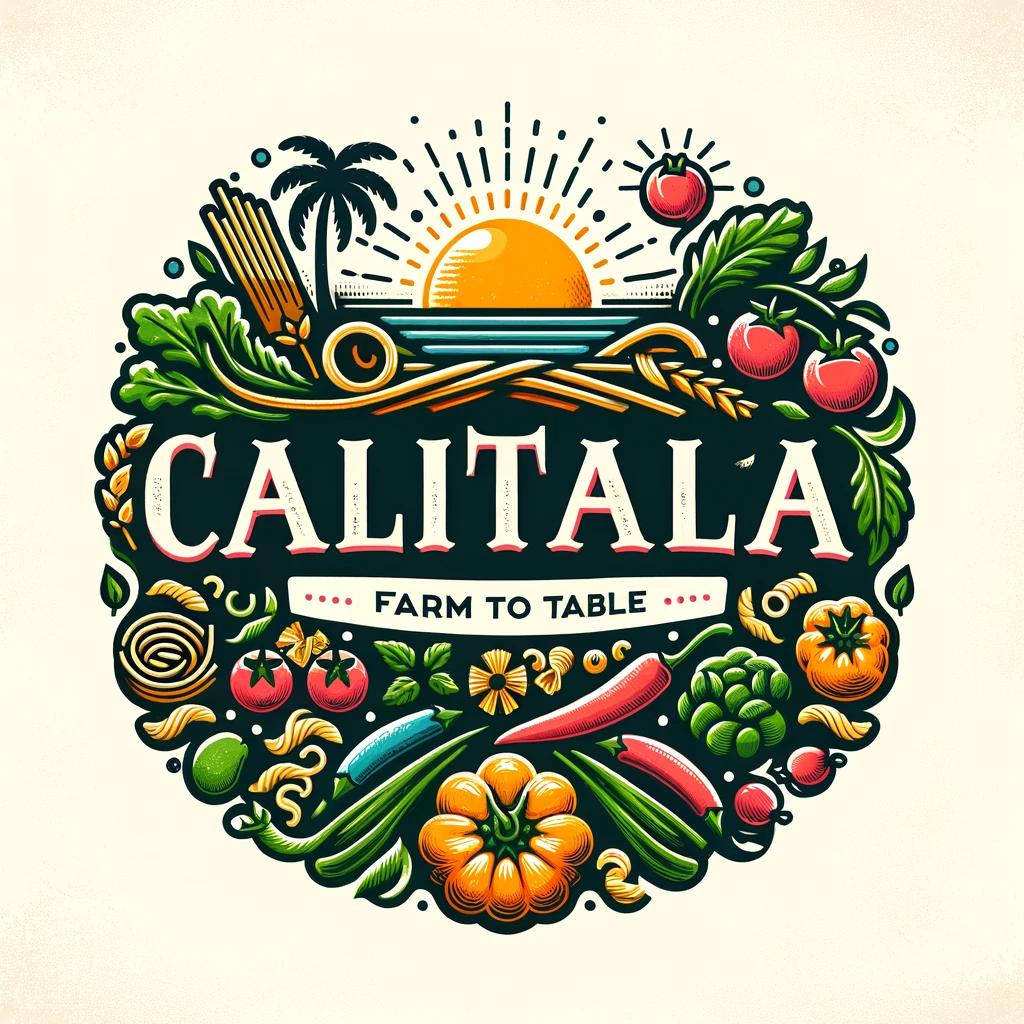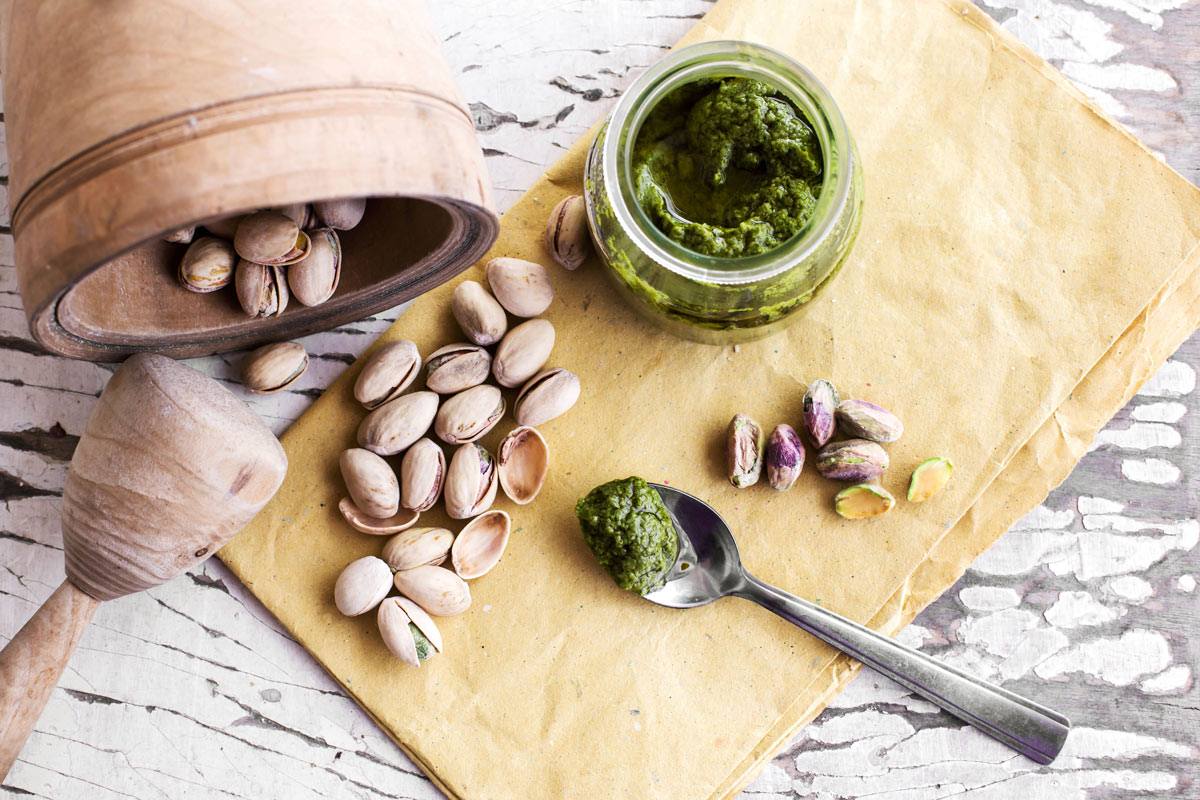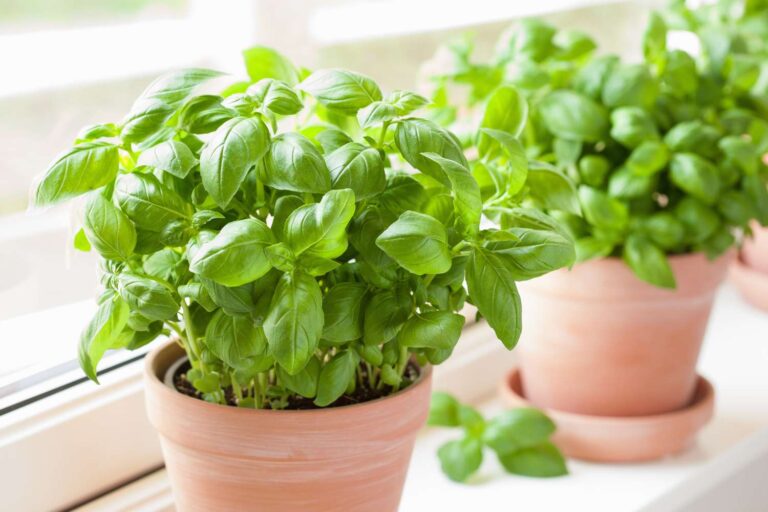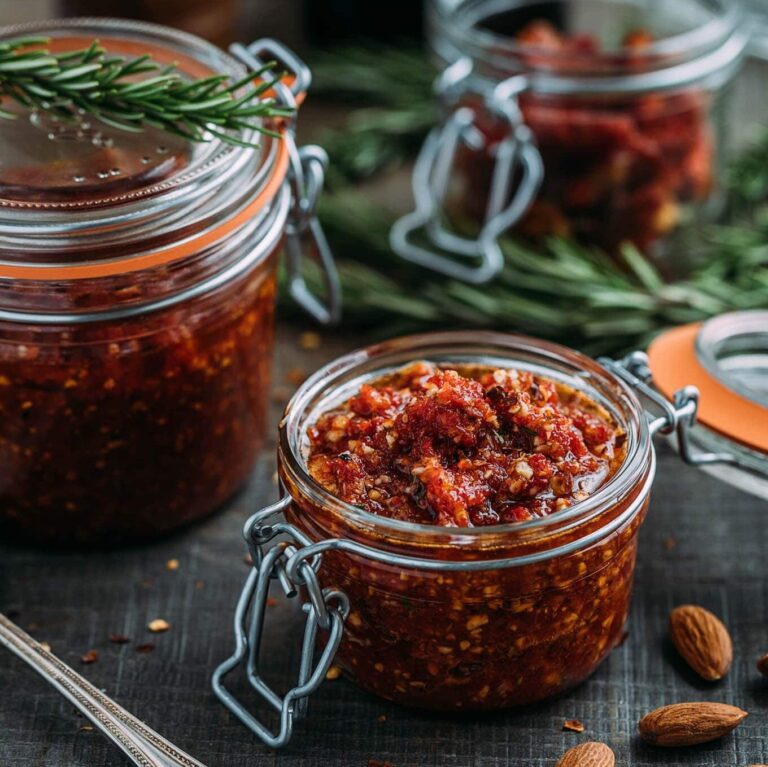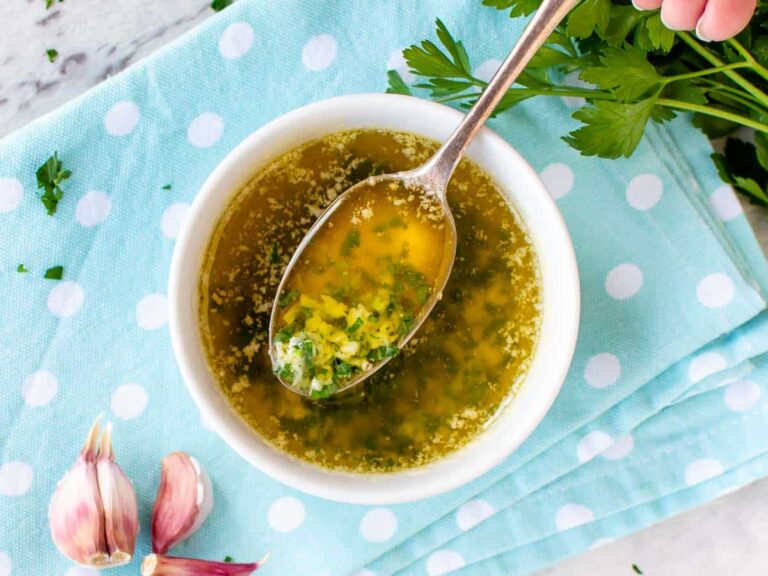Making classic pistachio pesto is an art that combines fresh ingredients and precise techniques. This vibrant and flavorful sauce can elevate a variety of dishes, from pasta to sandwiches. In this guide on how to make classic pistachio pesto, we’ll take you through each step, ensuring that you can create a delicious pesto at home.
Ingredients Needed
Creating an exceptional pistachio pesto begins with selecting high-quality ingredients. Each component plays a crucial role in the overall flavor and texture of the pesto.
Pistachios
Pistachios are the star of this pesto. They bring a unique, slightly sweet flavor and a vibrant green color that sets this pesto apart from the traditional basil-based variety.
- Type of Pistachios: Opt for raw, unsalted pistachios. Roasted pistachios can also be used, but they will impart a different, deeper flavor. Raw pistachios preserve the natural sweetness and subtlety that make this pesto unique.
- Preparing the Pistachios: Shell the pistachios and, if desired, remove the skins by blanching them briefly in boiling water and then rubbing them with a kitchen towel. Removing the skins can result in a smoother texture, although it’s not strictly necessary.
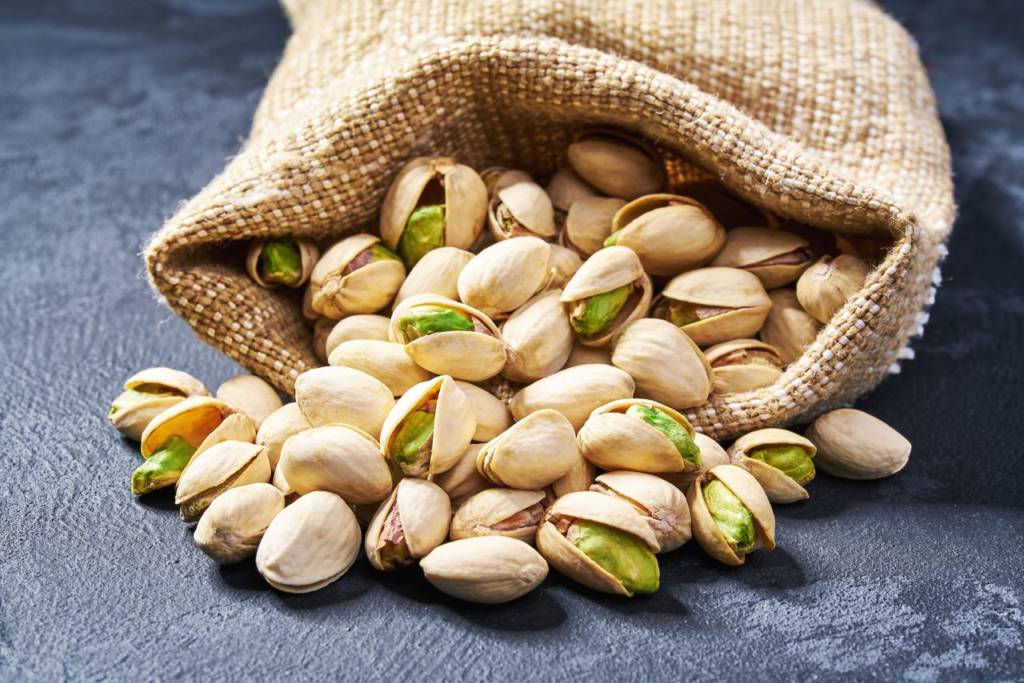
Olive Oil
Olive oil is the foundation of any good pesto. It binds the ingredients together and adds a rich, smooth texture.
- Choosing the Right Olive Oil: Use a high-quality extra virgin olive oil. Its fruity and slightly peppery notes complement the pistachios beautifully. A good olive oil enhances the flavor and ensures a luxurious texture.
- Amount to Use: The quantity can vary based on your preferred consistency. Start with about half a cup and adjust as needed. The olive oil’s role is crucial in achieving the right balance of creaminess and flavor.

Basil
Basil adds a fresh, aromatic note that balances the richness of the pistachios and olive oil.
- Type of Basil: Fresh basil leaves are essential. Avoid dried basil as it lacks the vibrant flavor required for pesto. The freshness of the basil is what gives the pesto its distinctive fragrance and taste.
- Preparing the Basil: Rinse the basil leaves under cold water and pat them dry with a paper towel. Ensuring the basil is clean and dry prevents any unwanted bitterness or excess water in your pesto.
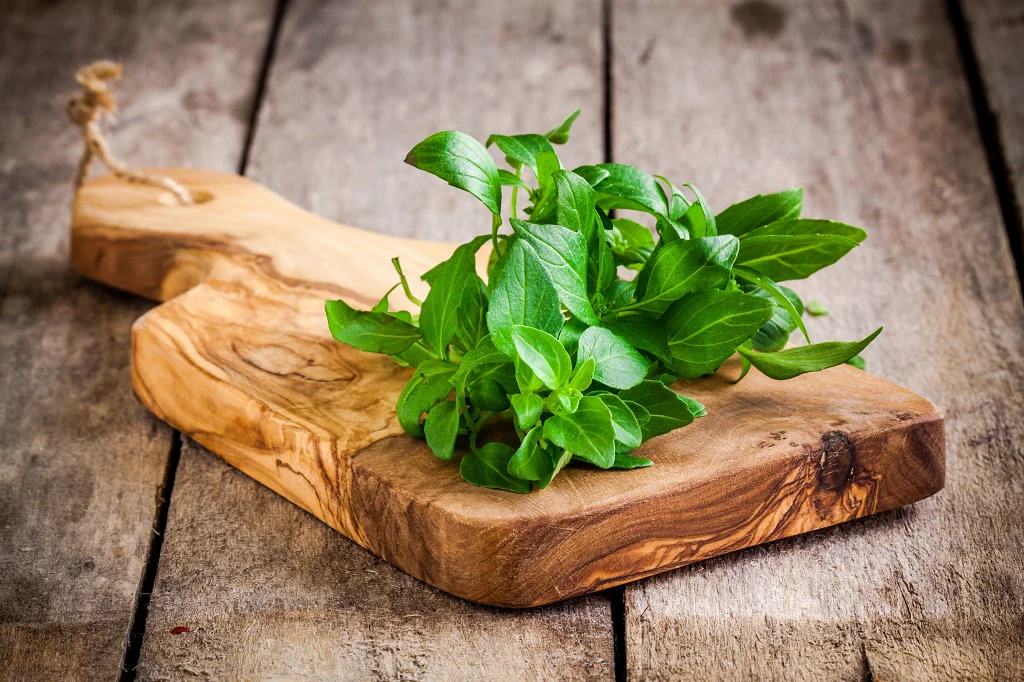
Parmesan Cheese
Parmesan cheese adds a nutty, savory depth to the pesto, enhancing the overall flavor profile.
- Type of Parmesan: Use freshly grated Parmesan for the best flavor. Pre-grated cheese often contains anti-caking agents that can affect the texture.
- Amount to Use: Typically, about a half-cup of grated Parmesan is used, but you can adjust based on your taste preferences.
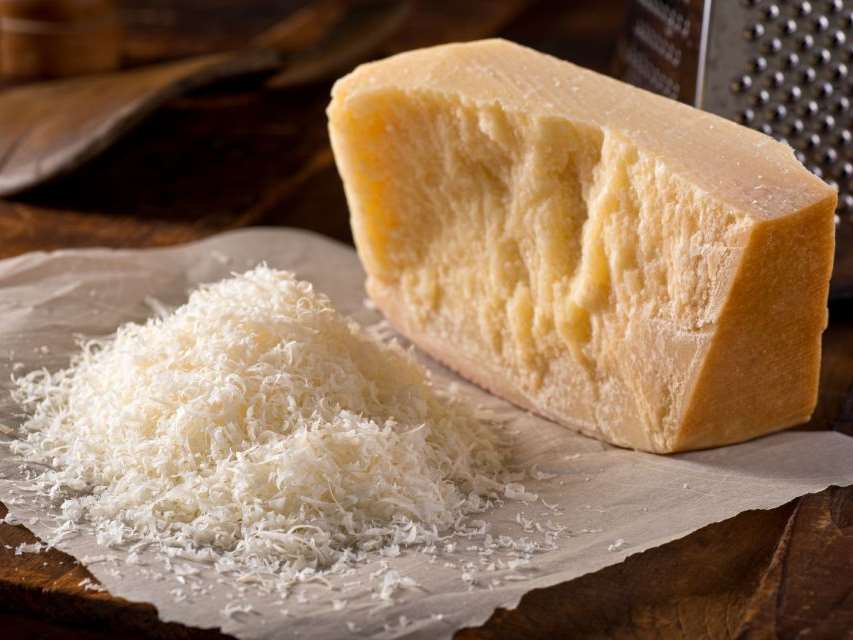
Garlic
Garlic provides a punch of flavor that complements the sweetness of the pistachios and the freshness of the basil.
- Type of Garlic: Fresh garlic cloves are preferred. The intensity of fresh garlic can be adjusted by the amount used.
- Preparation: Peel the garlic cloves and roughly chop them to make blending easier.

Salt and Pepper
Seasoning your pesto with salt and pepper is crucial for bringing out all the flavors.
- Type of Salt: Sea salt or kosher salt is preferred for its pure flavor.
- Pepper: Freshly ground black pepper adds a slight heat and depth to the pesto.

Equipment and Tools
To make pistachio pesto, you’ll need some basic kitchen tools. These ensure that the ingredients are properly blended to achieve the desired texture.

- Food Processor: A food processor is ideal for making pesto. It chops and blends the ingredients efficiently, ensuring a smooth and consistent texture.
- Mortar and Pestle: For a more traditional approach, a mortar and pestle can be used. This method requires more effort but can yield a rustic, chunky pesto that has a different, more hands-on feel.
- Measuring Cups and Spoons: Accurate measurements ensure the perfect balance of ingredients. Precision is key to achieving the right flavor profile.
- Spatula: A rubber spatula helps scrape down the sides of the food processor to ensure everything is well mixed. This ensures no ingredient is left out.
Preparation Steps
Making pistachio pesto involves several key steps, from prepping the ingredients to blending them together. Follow these steps for a perfect pesto every time.
Prepping the Ingredients
- Shell and Blanch the Pistachios: If desired, blanch the pistachios in boiling water for 1-2 minutes, then rub them with a kitchen towel to remove the skins. This step can be skipped if you prefer a chunkier texture or want to save time.
- Chop the Basil: Roughly chop the basil leaves to make them easier to blend. This helps prevent the leaves from getting stuck in the food processor blades.
- Grate the Parmesan Cheese: Freshly grated Parmesan adds a sharp, nutty flavor that complements the pistachios. Pre-grating ensures a smoother blending process.
- Prepare the Garlic: Peel and roughly chop the garlic cloves. This step makes it easier for the food processor to blend the garlic evenly.
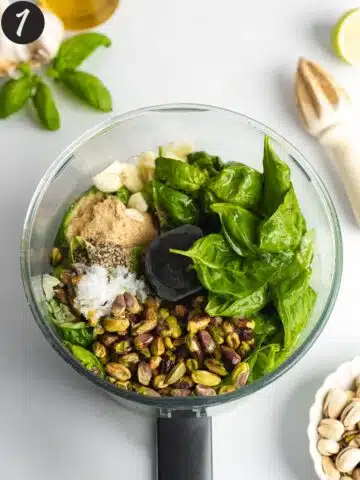
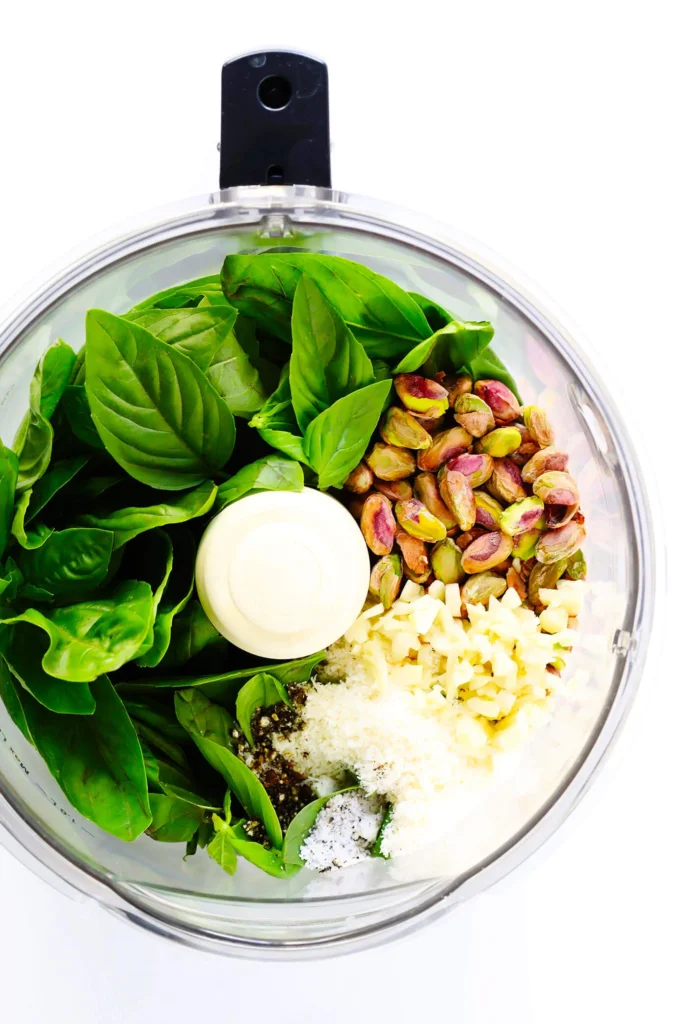
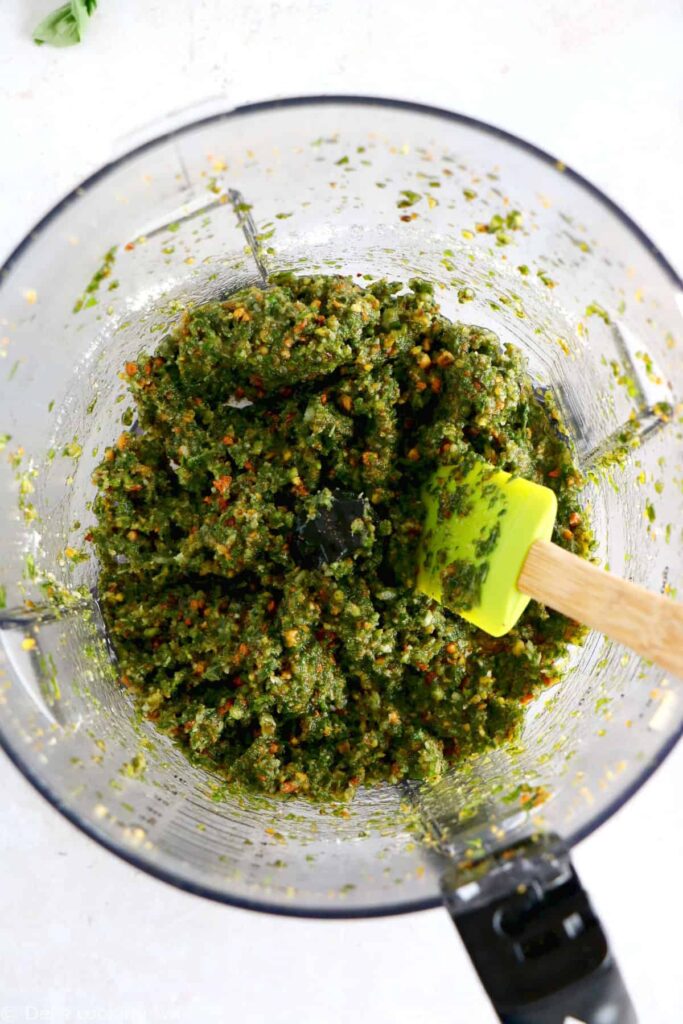
Blending Techniques
- Combine Dry Ingredients: Place the pistachios, basil, grated Parmesan cheese, and a couple of cloves of garlic in the food processor. Adding the dry ingredients first helps them break down more easily.
- Pulse Until Coarse: Pulse the ingredients a few times until they are coarsely chopped. This step is crucial for creating the base texture of the pesto.
- Add Olive Oil Slowly: With the food processor running, slowly pour in the olive oil. Blend until the mixture reaches your desired consistency. For a smoother pesto, blend longer. For a chunkier texture, pulse until just combined.
- Season to Taste: Add salt and pepper to taste. Blend briefly to mix the seasoning evenly. Taste as you go to ensure the seasoning is balanced.
Serving Suggestions
Pistachio pesto is incredibly versatile and can be used in various dishes. Here are some delicious ways to enjoy your homemade pesto.

Pasta Dishes
Pistachio pesto pairs beautifully with a variety of pasta. Its creamy texture and rich flavor can turn a simple pasta dish into a gourmet meal.
- Classic Pesto Pasta: Toss the pesto with cooked pasta, adding a splash of pasta water to help the sauce adhere to the noodles. This technique helps the pesto coat the pasta evenly.
- Pesto Cream Sauce: Mix the pesto with a bit of heavy cream for a richer sauce. This works particularly well with fettuccine or pappardelle. The cream adds a luxurious texture and mellows the strong flavors.
- Cold Pasta Salad: Use pistachio pesto as a dressing for a cold pasta salad with cherry tomatoes, mozzarella balls, and arugula. This makes for a refreshing and flavorful dish, perfect for summer.

As a Spread
Beyond pasta, pistachio pesto makes an excellent spread. Its rich, nutty flavor enhances a variety of dishes.

- Sandwich Spread: Spread the pesto on a sandwich with grilled vegetables, fresh mozzarella, and a drizzle of balsamic glaze. This adds a gourmet touch to everyday sandwiches.
- Bruschetta Topping: Top toasted baguette slices with pistachio pesto, fresh tomatoes, and a sprinkle of sea salt. This simple appetizer is sure to impress guests.
- Pizza Base: Use pistachio pesto as a base sauce for pizza. Top with ingredients like prosciutto, arugula, and shaved Parmesan. This twist on traditional pizza is both unique and delicious.
Other Uses
- Dip for Vegetables: Serve pistachio pesto as a dip for fresh or roasted vegetables. It’s a healthy and tasty snack option.
- Sauce for Grilled Meats: Drizzle pistachio pesto over grilled chicken or fish for an extra layer of flavor. The nutty pesto complements the smoky char of grilled meats.
- Flavoring for Soups: Stir a spoonful of pistachio pesto into soups for added richness and complexity. It works particularly well in vegetable soups and minestrone.
Frequently Asked Questions
Conclusion
Creating a classic pistachio pesto at home is a rewarding process that results in a versatile, flavorful sauce. With fresh ingredients and a bit of technique, you can master this recipe and use it to enhance a variety of dishes. Enjoy the process and the delicious results!
Disclosure: Our blog contains affiliate links to products. We may receive a commission for purchases made through these links. However, this does not impact our reviews and comparisons. We try our best to keep things fair and balanced, in order to help you make the best choice for you.
